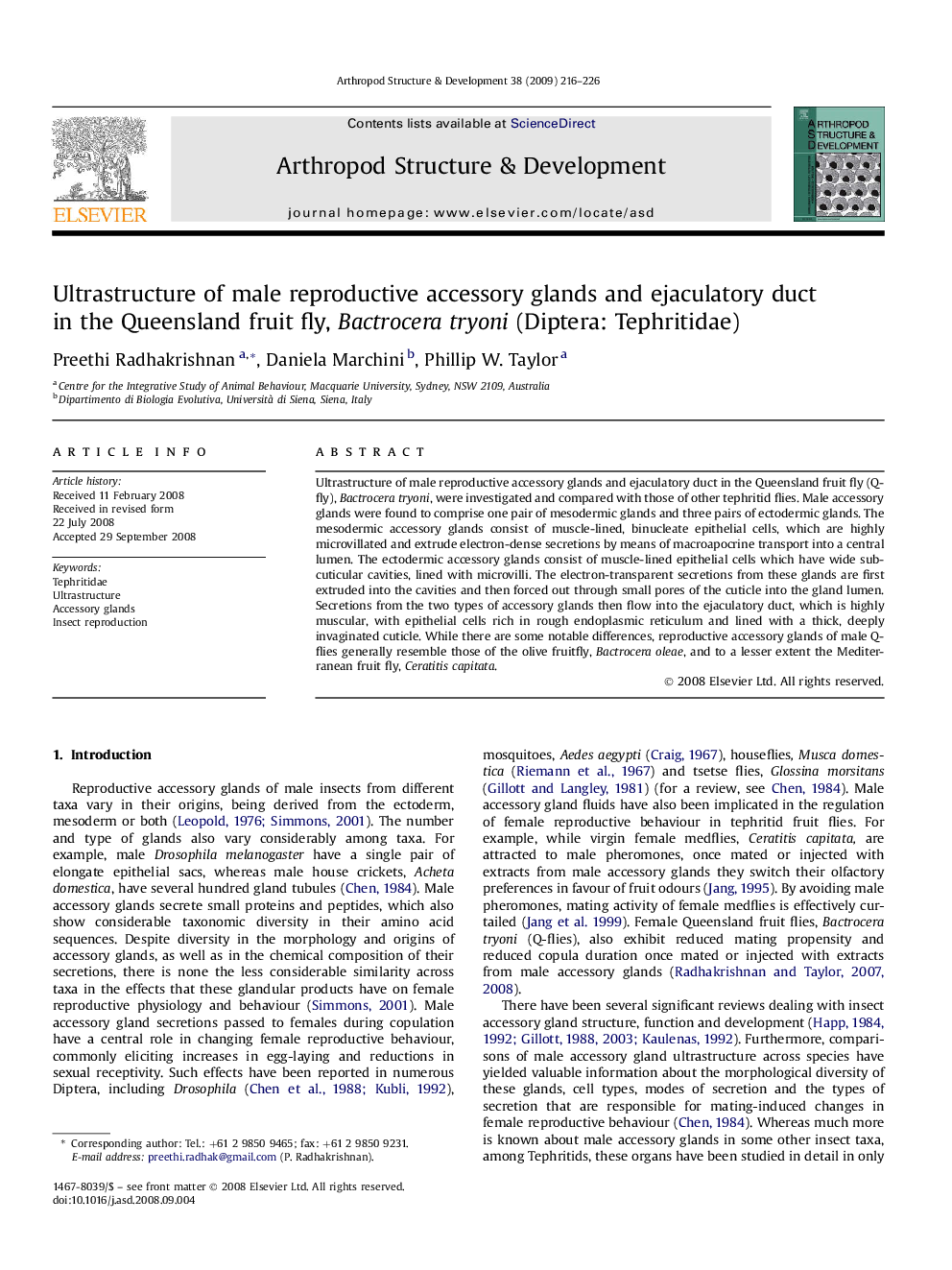| Article ID | Journal | Published Year | Pages | File Type |
|---|---|---|---|---|
| 2778903 | Arthropod Structure & Development | 2009 | 11 Pages |
Ultrastructure of male reproductive accessory glands and ejaculatory duct in the Queensland fruit fly (Q-fly), Bactrocera tryoni, were investigated and compared with those of other tephritid flies. Male accessory glands were found to comprise one pair of mesodermic glands and three pairs of ectodermic glands. The mesodermic accessory glands consist of muscle-lined, binucleate epithelial cells, which are highly microvillated and extrude electron-dense secretions by means of macroapocrine transport into a central lumen. The ectodermic accessory glands consist of muscle-lined epithelial cells which have wide subcuticular cavities, lined with microvilli. The electron-transparent secretions from these glands are first extruded into the cavities and then forced out through small pores of the cuticle into the gland lumen. Secretions from the two types of accessory glands then flow into the ejaculatory duct, which is highly muscular, with epithelial cells rich in rough endoplasmic reticulum and lined with a thick, deeply invaginated cuticle. While there are some notable differences, reproductive accessory glands of male Q-flies generally resemble those of the olive fruitfly, Bactrocera oleae, and to a lesser extent the Mediterranean fruit fly, Ceratitis capitata.
